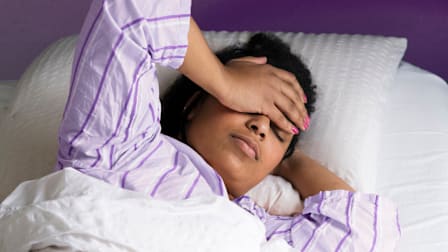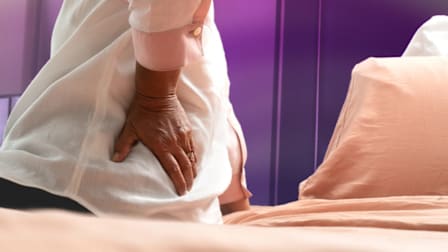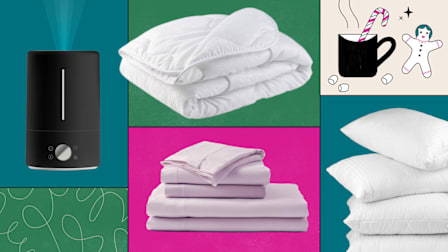5 Best Mattress Toppers of 2025, Tested by Our Experts
These top-rated supportive cushions not only give your bed a comfort boost but also earn strong scores for support and convenience
When you shop through retailer links on our site, we may earn affiliate commissions. 100% of the fees we collect are used to support our nonprofit mission. Learn more.
Does your once comfortable mattress now feel less plush? Or are you a college student, whose dorm room mattress needs a touch more softness? A mattress topper could be the fix.
Mattress toppers fit on top of your bed and offer varying degrees of cushioning to your sleep surface. They’re made from foam, including gel-infused foam and memory foam; latex; feathers; or fabric fibers. Some offer a combination of materials.
The average thickness of a mattress topper tends to be 2 to 4 inches, and what’s best depends on what feels comfortable to you. Generally speaking, though, the thicker the layer, the more pronounced the cushioning. Side sleepers looking for pressure-point relief for their hips and shoulders might consider thicker options. Back sleepers who want their firm bed to feel a bit less spartan might consider something thinner.
Best Mattress Toppers
Here are our top five picks based on Consumer Reports’ testing, all of which are 3 inches thick. We assess mattress toppers for support, convenience, and heat retention. I’ve also included additional insights based on trying each topper myself on a neutral wooden plank surface in the lab. (I’m 5 feet, 5 inches and 125 pounds. So keep in mind that your experience with these toppers may be different depending on your size and the feel of your mattress.)
How CR Tests Mattress Toppers
As with mattresses, the best mattress topper is highly subjective—what feels right for one person may feel terrible to another. And the ultimate feel of the topper also depends on the bed you’re placing it on. That said, we evaluate a few characteristics that might help shoppers compare their options more easily.
Support: Our lab engineers place a 20-pound weight on the surface of each topper and measure the depth of the depression. We also use a heavier weight and measure the distance between the weight and where the topper returns to its natural height. The less distance away, the better it is at conforming to your body.
Convenience: We favor mattress toppers with features that make using them easier. For instance, some toppers come with removable covers and corner straps, making them simpler to clean and keep in place. Others can be flipped to evenly distribute the wear and tear. All can be rotated.
Heat retention: Sleeping with a mattress topper will feel a tad warmer than sleeping on the same bed without one (unless you have a cooling mattress topper, which is more like a mattress pad paired with an active-cooling device). That’s because the topper’s materials will cuddle against your body as you sink in. As a result, Deitrick says, “you’ll have less airflow around your body.” That’s typically not a problem. But if you’re an inherently hot sleeper, mattress toppers that trap excessive heat could leave you waking up in the middle of the night in a sweat. All the toppers in our ratings are tested in a temperature-controlled chamber using a dummy dubbed the “tin man,” which is set at 98.6° F.
What to Know When Buying a Mattress Topper
Expert guidance on how to choose the best design—and when to buy a mattress instead
































